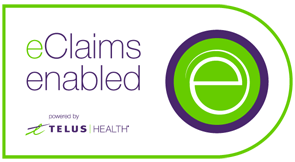In the complex world of mental health, the intersection of Attention Deficit Hyperactivity Disorder (ADHD) and Delayed Sleep Phase Syndrome (DSPS) presents a particularly challenging scenario. ADHD, a condition marked by symptoms of inattention, hyperactivity, and impulsivity, is often intricately linked with various sleep disturbances, DSPS being a prominent one.
The Nature of DSPS in ADHD
DSPS is a circadian rhythm sleep disorder characterized by a significant delay in the sleep-wake cycle. Individuals with this condition struggle to fall asleep until the early hours of the morning and have difficulty waking up at conventional times. This delayed sleep pattern can profoundly impact the lives of those with ADHD. The consequent sleep deprivation exacerbates core ADHD symptoms such as decreased focus, heightened impulsivity, and emotional instability. The resultant impact on daily functioning can be considerable, affecting academic performance, work productivity, and interpersonal relationships.
The Misdiagnosis Issue
One of the critical challenges in addressing DSPS in individuals with ADHD is the frequent misdiagnosis or overlooking of this condition. Often, the symptoms of DSPS are mistaken for insomnia or poor sleep hygiene. This misinterpretation leads to inappropriate treatment strategies, which fail to address the underlying circadian rhythm issue, leaving individuals struggling with ongoing sleep disturbances and unmanaged ADHD symptoms.
The Crucial Role of Psychotherapy in Treatment
Recognizing the need for effective treatment strategies, psychotherapy, particularly Cognitive Behavioral Therapy for Insomnia (CBT-i), has emerged as a crucial intervention for individuals grappling with both ADHD and DSPS.
Cognitive Restructuring in CBT-i
CBT-i involves cognitive restructuring, a process where negative and unhelpful beliefs about sleep are identified and challenged. This is particularly beneficial for ADHD individuals who may have developed anxiety around their inability to fall asleep at a socially acceptable time. By reframing these beliefs, CBT-i helps reduce sleep-related anxiety, paving the way for more positive sleep experiences.
Behavioural Techniques in CBT-i
CBT-i also incorporates behavioural techniques, which are vital in establishing a conducive environment for sleep. This includes:
- Developing Consistent Sleep Routines: Creating and adhering to a regular sleep schedule can be particularly challenging for those with ADHD due to difficulties with time management and routine maintenance. CBT-i assists in establishing these routines, enhancing the likelihood of better sleep quality.
- Relaxation Techniques: Techniques such as progressive muscle relaxation and deep breathing are taught to combat the hyperarousal state common in ADHD, facilitating a smoother transition to sleep.
- Stimulus Control and Sleep Restriction: These strategies focus on strengthening the bed's association with sleep rather than other activities. For ADHD individuals who may engage in stimulating activities before bedtime, such as using electronic devices, this association is crucial.
Integrating Light and Darkness Therapy
An integral part of treating DSPS involves manipulating environmental light exposure. Light and darkness therapy plays a significant role in this:
- Morning Light Exposure: Exposure to bright light in the morning helps advance the circadian phase, signalling the body it's time to wake up.
- Evening Light Reduction: Minimizing exposure to blue light from screens and other sources in the evening assists in the production of melatonin, the hormone responsible for regulating sleep.
Practical Considerations in Light and Darkness Therapy
- Consistency is Key: Regular exposure to morning light and consistent reduction of evening light is essential for the success of this therapy.
- Environment Modification: Utilizing blue light filters on screens and investing in dimmer switches or blackout curtains can significantly aid in this process.
The Comprehensive Approach to Treatment
For individuals with ADHD and DSPS, a comprehensive approach that combines psychotherapeutic strategies with light and darkness therapy is crucial. This multifaceted approach addresses both the cognitive-behavioural aspects of sleep disturbances and the physiological components of the circadian rhythm disorder.
Conclusion
In addressing the complex interplay between ADHD and DSPS, a tailored approach that incorporates CBT-i, light therapy, and consistent behavioural practices offers a pathway to improved sleep and better management of ADHD symptoms. It's important for individuals facing these challenges to seek professional guidance to develop an effective treatment plan. With commitment and the right support, achieving restorative sleep and enhancing overall well-being is a realistic and attainable goal. Contact a therapist at STG La Ronge Counselling for additional and more personalized supports.















